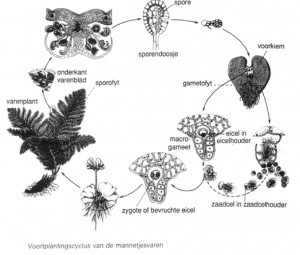Outgrowth
Utrecht is a fern city par excellence. These flowerless plants reside and flourish, gaining their nutrients from the lime-mortar and clay bricks and remnant walled exoskeletons of the medieval city, and, less visibly, from street gutters. The ferns selected for Casco are the most common city ferns (Cyrtomium falcatum; Dryopteris filix-mas; Asplenium trichomanes; Polypodium vulgare; Osmunda regalis a.o), who crop up in unsuspecting margins, crevices and interstices of urban public space.
Ferns, and vegetation in general, dwell otherwise than humans and access the city differently in a non-proprietary way. They occupy space, reinventing a strange modern rootedness in the uprooted world of the city. Yet, despite their telluric attachment, plants enjoy a kind of movement and expression of time which passes below the threshold of human perception. We tend to think of plants as immobile beings, yet vegetare, etymologically, means to animate, to enliven — denoting qualities of vigorousness and activity. Vegetation is resilient, exhibiting an ability to perpetually adapt to changes in its environment and differences between its various habitats.
Most living room or office furniture (from chairs to benches, to desks) has been cultured over centuries to enable our bodies to pursue physically sedentary yet mentally agile activities such as reading, writing, thinking, daydreaming. Outgrowth is an experimental indoor garden growing on left-over bits of furniture, cultivating a new habit that couples thinking to the movement of plants. It is a space that challenges familiar forms of plant cultivation, and asks how to rearrange our domestic habits in a way that can re-imagine our inherited relationship to plant life and reevaluate our relation to vegetal life both inside and out.
Several species of ferns, common residents of Utrecht, have been brought inside the Casco office space. They have been sorted into 3 biotope communities that accommodate the ferns’ different habitual preferences:
1. Mortar ferns Polypodium vulgare (Gewone eikvaren / polypody); Asplenium trichomanes (Steenbreekvaren / Maidenhair spleenwort); Polystichum setiferum & Polystichum setiferum s. plumoso-densum (Zachte naaldvaren /Soft shield fern); Polystichum aculeatum (Stijve naaldvaren / Hard shield fern);
Biotope 1 needs a soil mixed with sand and alkaline (rich in lime). These ferns grow in between bricks and stones, sucking minerals from the urban infrastructure. Some prefer to be on their own like Polypody, which exerts territorial traits by emitting an acidic emission from its root stock. Planting these together is thus an experiment of sorts. Feed them rain water regularly, 3-4 times a week (Utrecht tap water is too saline and produces a crust of salt and stress on the plants in the long run).
2. Sultry shadow lovers Dryopteris filix-mas (Mannetjes varen /male fern); Athyrium filix-femina (Wijfesvaren / lady fern); Cyrtomium falcatum (ijzervaren); Cryrotonium fortunae (ijzervaren)
Biotope 2 likes a damp poor soil mixed with some sand, but not as akaline as the mortar ferns. These ferns like shadow, but not impartial to some sun. In evolutionary terms, the fern’s neochrome gene allows them to perceive red and blue light (whereas most plants only perceive blue light) thus enabling them to survive in the shadows of both living rooms and forest canopies. Water more regularly than biotope 1, around 4-5 times a week. Soil needs to remain moist but not mushy.
3. Cosmopolitan swamp ferns Theleptrus palustris (Moerasvaren / Marsh fern); Osmunda regalis (Koningsvaren / Royal fern)
These ferns grow in the marshy underground. The soil needs to be wet, water daily or almost daily, depending on the ambient dryness/humidty.
Text: Wietske Maas
These common ferns have been collected from various collections and collections of domestic pteridologsts in Utrecht. With special thanks to:
Claud Biemans, urban botanist, Amsterdam
Gerard van Buiten (head gardener, Hortus, University of Utrecht)
Harry Roskam, president of the Nederlandse Varenvereniging (Dutch Fern Society)
Henk Nokkert (head gardener, Oude Hortus, University of Utrecht)
Wim Vuik, urban botanist who made an inventory of all the ferns living in the Utrecht street gutters: surveying all 60.000 of Utrecht’s gutters
